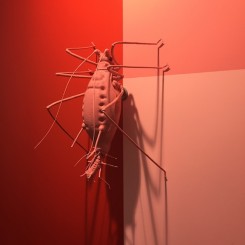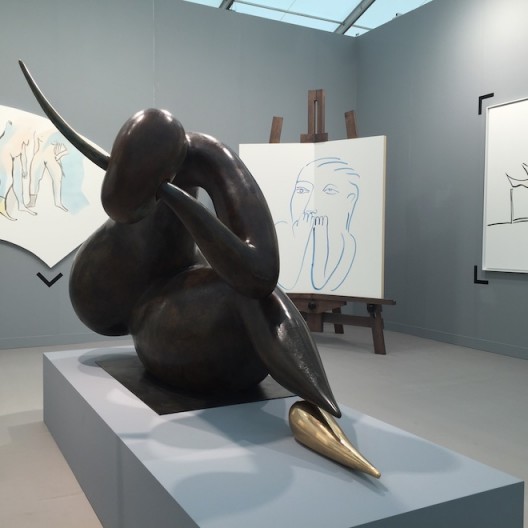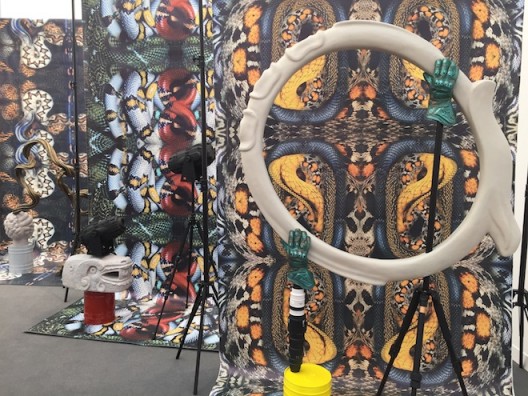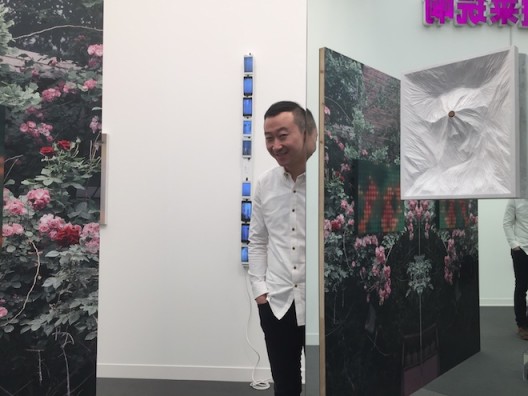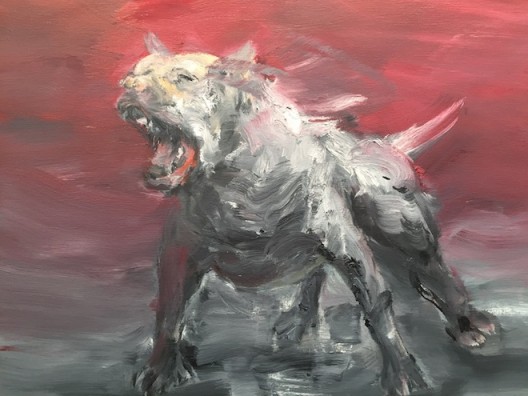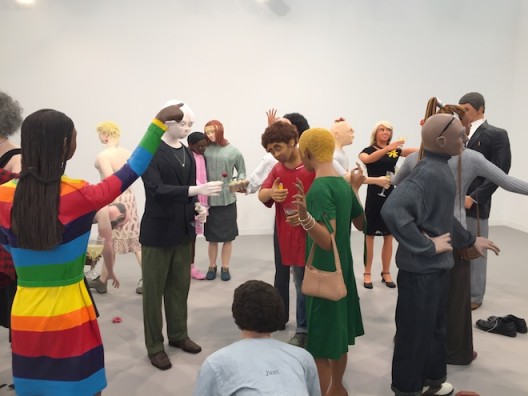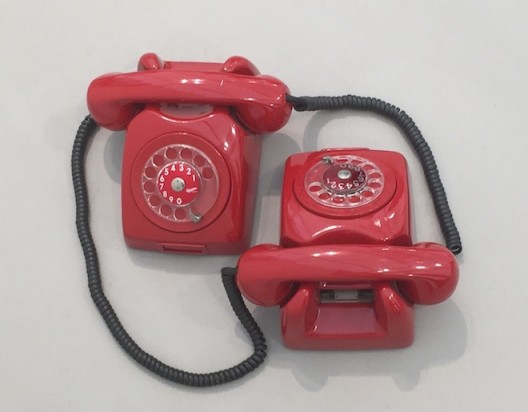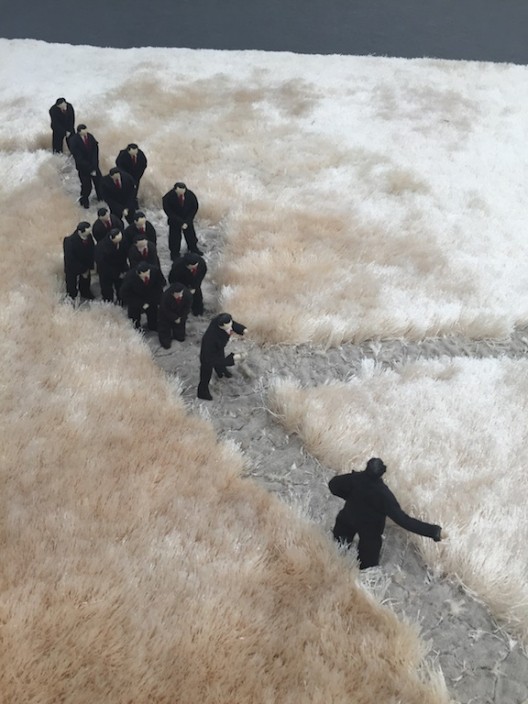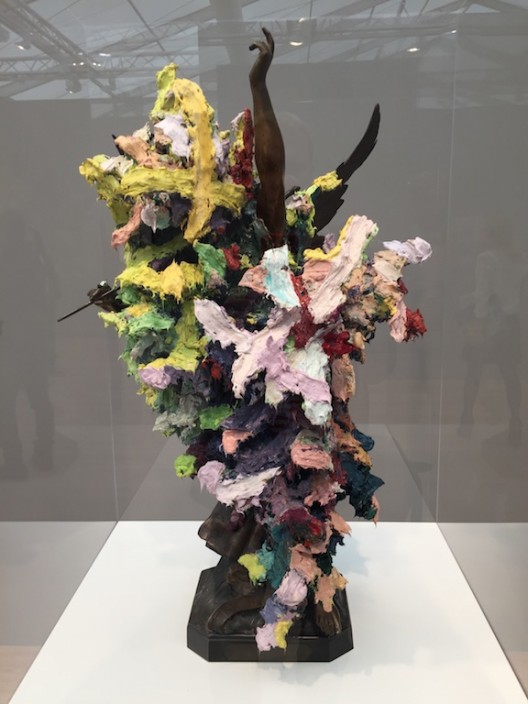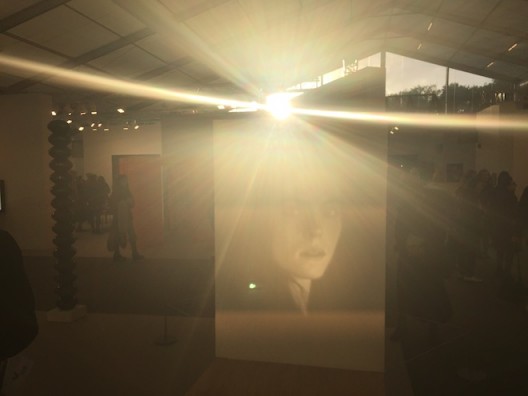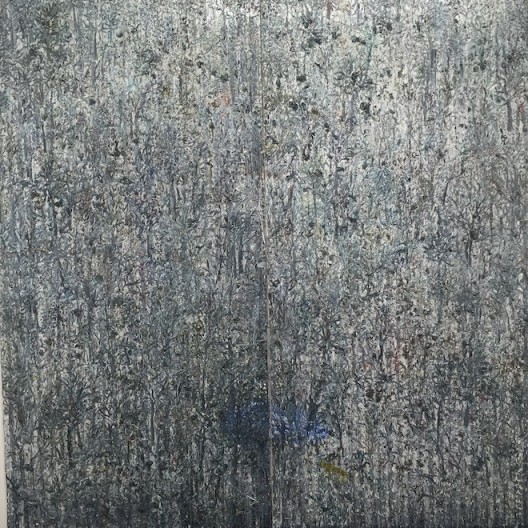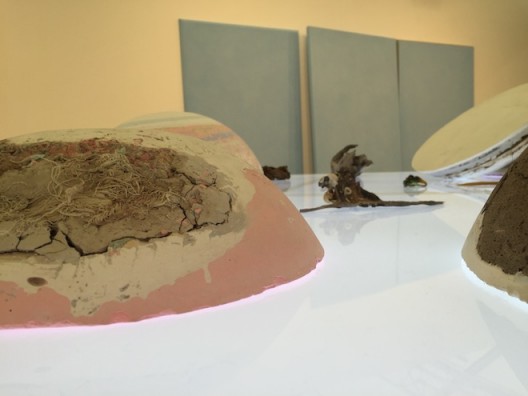London is the second greatest art market on the planet—this notwithstanding the English penchant for pictures of cows, horses and other assets/family members. Fortunately, London is full of foreigners. Ignore the auctions though, with their unnatural relations between vampires and zombies. Living art is elsewhere, from museums, to private collections, to galleries and an art fair we know as Frieze.
Unlike New York, where art fairs are simply unnecessary, Frieze is an inimitable part of London’s success. The early nineties witnessed more than a handful artists with the talent and determination to stake a claim on history; they were led by Damien Hirst, who curated a show called Freeze (in a meat storage warehouse). Along with a handful of dedicated local galleries (notably White Cube, Lisson and Victoria Miro), a museum (Tate Modern), a clutch of collectors (oh, Charles, how we have fallen), a renewed internationalism and optimism following the fall of the Eastern Bloc, and a magazine run by a couple of graduates which made seemingly obscure art debates cool and popular, London became the place in Europe to see new art by living artists. Eventually, the founders of Frieze, Amanda Sharp and Matthew Slotover, also founded a fair. The brilliant idea of putting a fair in a tent in Regent’s Park tricked the English into thinking it was a like a bucolic countryside fair. And it was in Regent’s Park—this wasn’t a commercial flea market, but royal entertainment! (The English like games). The trick still works in London, whereas in New York it doesn’t really (in Miami it does). The addition of Frieze Masters, in another tent, threatened to upset the jest by creating unfair comparisons—the quality of Masters was simply better. However, that problem appears to have been solved. This year, the two shows were much more balanced.
Hauser & Wirth reiterated their London group show from 2014. It impressed one German editor as a “power display”. Not me. In their Saville Row gallery, it was a finely measured display of curatorial formalism. At Frieze, it was just a display. All that was missing were the shopping trollies.
Camille Henrot at Kamel Mennour (Paris) and König Gallery (Berlin). Henrot is a prodigious talent in the art of curatorial installation whose orbit is just coming into alignment with the art world. But she really isn’t good at drawing. Does that matter? No, because the drawings are not to be taken at face value (unlike, say, with Glenn Brown at Gagosian or even Anri Sala at Marian Goodman) but as comments in relation to her curatorial scenography.
The emerging gallery section was a hotch-potch—was this really the best selection possible? Here, the limits of Frieze were most obvious. Most works looked like aimless variations on most other works. Two of the exceptions however, despite being tucked away in a corner together, were the Chinese contenders, Antenna Space, with a booth devoted to Guan Xiao, and Leo Xu Projects with a mini-version of a 2014 exhibition curated by artist Guo Hongwei at his non-profit Beijing Space. Both deserved more space. Clearly they would put it to good use. In the same corner was Roman Stanczak at Stereo Warsaw, playing with vacuum verve on Duchamp and Koons.
China was also represented by Yan Pei-Ming at Taddaeus Ropac and a solo show of paintings and sculptures by Xu Qu at Almine Rech Gallery. Very nearby, ShanghART showed works by Ding Yi and Zhang Enli, of course, but other works caught my eye, including an impressive monochrome painting by Ouyang Chun (enough to prod me to reevaluate my previous skepticism), fascinating biological abstract photography by Jiang Pengyi, and a humming black factory by Zhang Ding.
Tom Friedan’s “Cocktail Party” provided light art fair relief, but we know that was precisely the plan. Anyhow, it was not competition for a lubricious Allen Jones at Michael Werner.
Isa Genzken’s wall work at Buchholz Galerie was far weightier, as was Inge Mahn’s “Stuhlkreis” 2000 at Galerie Max Hetzler (what an artist! I definitely need to learn more about her). Simon Lee Gallery took the opportunity to present a series of solo shows each day (Heimo Zoberig was on Wednesday).
Other works that caught my attention were a Laure Prouvost wall-work at MOT International, Dominique Gonzalez-Forster’s pair of Siamese telephones at Esther Schipper, Anri Sala drawings at Marian Goodman and a bewitching mini-exhibition of works by Xavier Veilhan at Galerie Perrotin.
Frieze London was, despite minor quibbles, a great show of why London became and remains the modern and contemporary art capital of Europe (speaking selfishly, the Reading Room was a great improvement on boring magazine stands). The London art scene is fun, diverse and open (more so than Berlin). It is not always the most intellectual place for art but—like New York—year-round it has a full calendar of striking museum and gallery exhibitions, just not as many collectors. Central St. Martin’s may not be as strong or free as Frankfurt’s Städelschule, but for now, the international English language gives it a free pass. Subtlety and intellectualism are overrated anyway. Still, London is too expensive for most artists (remember them?—they’re the ones who make the art). And with the rising threat that the UK will leave the European Union, one must wonder whether London will become an island in an island, or itself be engulfed by inwardness and smallness.
London needs Frieze and what it stands for, now more than ever, and even more than Frieze needs London.
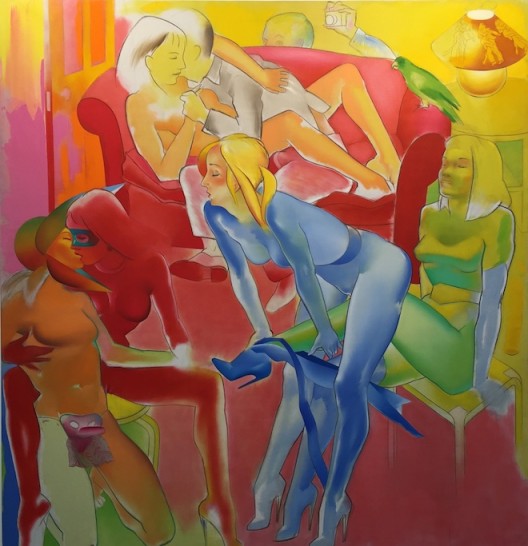
Allen Jones “The Visitor” (1985) at Michael Werner was apparently sold to someone from Ibiza. Who’d have thought it?

